The Importance of Basecoat
If you’re currently considering beginning a rendering project on your property, you might have heard the terms ‘basecoat’ or ‘adhesive’ crop up. These products are necessary steps in the external wall insulation process. This is because of their ability to secure and seal the layers of the insulation materials, preparing the substrate for rendering.
At EWI Store, we have an extensive range of basecoats and adhesives to suit every project’s needs. For example, some have been designed for use with different substrates, wall structures, and textures.
In this blog, we will take a closer look at the importance of basecoat. We hope to demonstrate that it is an ideal product for every rendering situation. This blog will also discuss the best products, how to go about applying them, and when to use them.
Read on to learn more about basecoats!
What is a basecoat?
Before discussing the importance of basecoats and their various uses, it is worth outlining exactly what it is in relation to external wall insulation.
Basecoats make up a crucial layer of the external wall insulation system. They are a key component in the system as they prepare the surface of the substrate prior to render application.
Our basecoats usually come as a cement-based formula for use as part of a system. There are many different types of basecoats available on the market that can be used for different types of construction projects.
For example, at the EWI store, we have an extensive range of basecoats and adhesives. You can choose from our EWI-225 premium basecoat, EWI-220 EPS basecoat adhesive, EWI-269 Lightweight basecoat, and many more! We will describe some of these products and their various uses in later sections.
-
Premium Basecoat (EWI-225) – 25kg
Rated 5.00 out of 5£20.90 Incl. VAT£17.42 Excl. VAT£23.23 Incl. VAT£19.36 Excl. VAT -
EPS Basecoat Adhesive (EWI-220) – 25kg
Rated 4.44 out of 5£14.52 Incl. VAT£12.10 Excl. VAT£16.16 Incl. VAT£13.47 Excl. VAT -
Lightweight Basecoat (EWI-269) – 25kg
Rated 4.00 out of 5£12.60 Incl. VAT£10.50 Excl. VAT£14.39 Incl. VAT£11.99 Excl. VAT
Why use basecoat?
As mentioned, this is an extremely useful product to complement render systems. But why should you use it?
The simple answer to this question is that it works perfectly in conjunction with other layers in the external wall insulation system to protect your external walls.
It has long been reported that using a basecoat layer within a render system is a surefire way to provide a long-lasting and crack-free finish for your property.
Not only does it provide a strong and durable base layer for the application of render or insulation materials, but it also improves the overall appearance of the finished project. You can view some installation case studies where basecoat adhesive has been utilised to create an immaculate finish here.
Do you need a basecoat?
Having highlighted the various benefits of using a basecoat, you might be wondering if it is absolutely necessary to use it in EWI installation projects.
The answer is that, while it is not an absolute necessity, it is highly recommended that you make use of it – especially if you want your render system to last. Without applying a basecoat layer, the appearance of the system can be negatively affected – with a ‘ghosting’ effect often occurring when this stage is skipped.
The great thing about basecoat is that it can oftentimes serve a dual purpose. For example:
- You can use it to create a reinforcement layer in render-only or mineral wool, EPS and Kingspan K5 insulation systems.
- You can use it primarily as an adhesive to attach mineral wool insulation boards to a substrate.
The best basecoat?
While all of our basecoats are designed for their own unique purposes, perhaps our strongest and most versatile basecoat is the EWI-225 Premium Basecoat.
Whereas the EWI-220 EPS Basecoat is designed for use with EPS insulation boards and is also a dual-purpose solution, it is not suitable for application directly onto masonry as part of render-only projects. By comparison, the EWI-225 Premium Basecoat is suitable for render-only.
EWI-225 also differs from the others in the range in that it is composed of Portland cement. This premium ingredient delivers a high-strength basecoat consistency. This ensures the surface is prepped with a durable layer prior to the application of thin-coat silicone render.
EWI-225 is EWI Pro’s finest available basecoat adhesive and is compatible with a vast range of insulation materials, including EPS, Mineral Wool, Kingspan K5, Wood Fibre and render-only systems.
We also stock EWI-222p Performance Basecoat, which is a great substitute for Premium Basecoat with many of the same benefits.
Therefore, we highly recommend opting for this basecoat if you’re looking for a highly breathable, flexible and strong reinforcement layer!
When should I use it?
Due to the versatility of this product, it can be applied at several different points throughout the installation process.
When applying it as a reinforcement layer, you should apply it directly to the substrate. You can then follow with a layer of fibreglass mesh which is embedded within the middle of it (at a 6mm thickness).
By comparison, when using it as an adhesive to fix insulation boards to a substrate, you can apply it to the back of the insulation board before fixing it to the substrate.
You can read more about the various installation processes, what you will need, and when to apply certain products by visiting our complete guides page!
How to apply
We highly recommend using a notched trowel to apply our solutions. These come in varying sizes to suit the different qualities of our basecoat range.
For example, we suggest using a 6mm notched trowel when applying EWI-225. This is because it is a finer solution. Whereas you might want to use a 10mm notched trowel for the likes of EWI-220 EPS Basecoat Adhesive.
However, please note that if you are applying our EWI-269 Lightweight Basecoat, a plastering trowel or spray machine should be used to achieve the desired finish.
-
Regal & Barnes – Hardened Stainless Steel Trowel (Specialist Edition) – 457mm
£49.30 Incl. VAT£41.08 Excl. VAT
Source: EWI Pro Youtube
Facebook
Twitter
LinkedIn
Your cart
Trade Account Login

We use cookies on our website to give you the most relevant experience by remembering your preferences and repeat visits. By clicking “Accept All”, you consent to the use of ALL the cookies. However, you may visit "Cookie Settings" to provide personalised consent.
Manage consent
Privacy Overview
This website uses cookies to improve your experience while you navigate through the website. Out of these, the cookies that are categorized as necessary are stored on your browser as they are essential for the working of basic functionalities of the website. We also use third-party cookies that help us analyze and understand how you use this website. These cookies will be stored in your browser only with your consent. You also have the option to opt-out of these cookies. But opting out of some of these cookies may affect your browsing experience.
Necessary cookies are absolutely essential for the website to function properly. These cookies ensure basic functionalities and security features of the website, anonymously.
| Cookie | Duration | Description |
|---|---|---|
| __stripe_mid | 1 year | This cookie is set by Stripe payment gateway. This cookie is used to enable payment on the website without storing any patment information on a server. |
| __stripe_sid | 30 minutes | This cookie is set by Stripe payment gateway. This cookie is used to enable payment on the website without storing any patment information on a server. |
| _GRECAPTCHA | 5 months 27 days | This cookie is set by the Google recaptcha service to identify bots to protect the website against malicious spam attacks. |
| apbct_cookies_test | session | CleanTalk sets this cookie to prevent spam on comments and forms and act as a complete anti-spam solution and firewall for the site. |
| apbct_page_hits | session | CleanTalk sets this cookie to prevent spam on comments and forms and act as a complete anti-spam solution and firewall for the site. |
| apbct_prev_referer | session | Functional cookie placed by CleanTalk Spam Protect to store referring IDs and prevent unauthorized spam from being sent from the website. |
| apbct_site_landing_ts | session | CleanTalk sets this cookie to prevent spam on comments and forms and act as a complete anti-spam solution and firewall for the site. |
| apbct_site_referer | 3 days | This cookie is placed by CleanTalk Spam Protect to prevent spam and to store the referrer page address which led the user to the website. |
| apbct_timestamp | session | CleanTalk sets this cookie to prevent spam on comments and forms and act as a complete anti-spam solution and firewall for the site. |
| apbct_urls | 3 days | This cookie is placed by CleanTalk Spam Protect to prevent spam and to store the addresses (urls) visited on the website. |
| AWSALBCORS | 7 days | This cookie is managed by Amazon Web Services and is used for load balancing. |
| cookielawinfo-checkbox-advertisement | 1 year | Set by the GDPR Cookie Consent plugin, this cookie is used to record the user consent for the cookies in the "Advertisement" category . |
| cookielawinfo-checkbox-analytics | 11 months | This cookie is set by GDPR Cookie Consent plugin. The cookie is used to store the user consent for the cookies in the category "Analytics". |
| cookielawinfo-checkbox-functional | 11 months | The cookie is set by GDPR cookie consent to record the user consent for the cookies in the category "Functional". |
| cookielawinfo-checkbox-necessary | 11 months | This cookie is set by GDPR Cookie Consent plugin. The cookies is used to store the user consent for the cookies in the category "Necessary". |
| cookielawinfo-checkbox-others | 11 months | This cookie is set by GDPR Cookie Consent plugin. The cookie is used to store the user consent for the cookies in the category "Other. |
| cookielawinfo-checkbox-performance | 11 months | This cookie is set by GDPR Cookie Consent plugin. The cookie is used to store the user consent for the cookies in the category "Performance". |
| ct_checkjs | session | CleanTalk–Used to prevent spam on our comments and forms and acts as a complete anti-spam solution and firewall for this site. |
| ct_fkp_timestamp | session | CleanTalk sets this cookie to prevent spam on the site's comments/forms, and to act as a complete anti-spam solution and firewall for the site. |
| ct_pointer_data | session | CleanTalk sets this cookie to prevent spam on the site's comments/forms, and to act as a complete anti-spam solution and firewall for the site. |
| ct_ps_timestamp | session | CleanTalk sets this cookie to prevent spam on the site's comments/forms, and to act as a complete anti-spam solution and firewall for the site. |
| ct_sfw_pass_key | 1 month | CleanTalk sets this cookie to prevent spam on comments and forms and act as a complete anti-spam solution and firewall for the site. |
| ct_timezone | session | CleanTalk–Used to prevent spam on our comments and forms and acts as a complete anti-spam solution and firewall for this site. |
| elementor | never | This cookie is used by the website's WordPress theme. It allows the website owner to implement or change the website's content in real-time. |
| viewed_cookie_policy | 11 months | The cookie is set by the GDPR Cookie Consent plugin and is used to store whether or not user has consented to the use of cookies. It does not store any personal data. |
Functional cookies help to perform certain functionalities like sharing the content of the website on social media platforms, collect feedbacks, and other third-party features.
| Cookie | Duration | Description |
|---|---|---|
| __zlcmid | 1 year | This cookie is used by Zendesk live chat and is used to store the live chat ID. |
| bcookie | 2 years | LinkedIn sets this cookie from LinkedIn share buttons and ad tags to recognize browser ID. |
| bscookie | 2 years | LinkedIn sets this cookie to store performed actions on the website. |
| lang | session | LinkedIn sets this cookie to remember a user's language setting. |
| lidc | 1 day | LinkedIn sets the lidc cookie to facilitate data center selection. |
| UserMatchHistory | 1 month | LinkedIn sets this cookie for LinkedIn Ads ID syncing. |
Performance cookies are used to understand and analyze the key performance indexes of the website which helps in delivering a better user experience for the visitors.
| Cookie | Duration | Description |
|---|---|---|
| __utma | 2 years | This cookie is set by Google Analytics and is used to distinguish users and sessions. The cookie is created when the JavaScript library executes and there are no existing __utma cookies. The cookie is updated every time data is sent to Google Analytics. |
| __utmb | 30 minutes | Google Analytics sets this cookie, to determine new sessions/visits. __utmb cookie is created when the JavaScript library executes and there are no existing __utma cookies. It is updated every time data is sent to Google Analytics. |
| __utmc | session | The cookie is set by Google Analytics and is deleted when the user closes the browser. It is used to enable interoperability with urchin.js, which is an older version of Google Analytics and is used in conjunction with the __utmb cookie to determine new sessions/visits. |
| __utmt | 10 minutes | Google Analytics sets this cookie to inhibit request rate. |
| __utmv | 2 years | The __utmv cookie is set on the user's device, to enable Google Analytics to classify the visitor. |
| __utmz | 6 months | Google Analytics sets this cookie to store the traffic source or campaign by which the visitor reached the site. |
| sib_cuid | 6 months | Purechat uses this cookie to send data to purechat.com, to connect visitors to the reservation team and track visitors to stay on portal. |
| SRM_B | 1 year 24 days | Used by Microsoft Advertising as a unique ID for visitors. |
Analytical cookies are used to understand how visitors interact with the website. These cookies help provide information on metrics the number of visitors, bounce rate, traffic source, etc.
| Cookie | Duration | Description |
|---|---|---|
| _ga | 2 years | The _ga cookie, installed by Google Analytics, calculates visitor, session and campaign data and also keeps track of site usage for the site's analytics report. The cookie stores information anonymously and assigns a randomly generated number to recognize unique visitors. |
| _gat_gtag_UA_61069204_2 | 1 minute | Set by Google to distinguish users. |
| _gat_UA-61069204-2 | 1 minute | A variation of the _gat cookie set by Google Analytics and Google Tag Manager to allow website owners to track visitor behaviour and measure site performance. The pattern element in the name contains the unique identity number of the account or website it relates to. |
| _gcl_au | 3 months | Provided by Google Tag Manager to experiment advertisement efficiency of websites using their services. |
| _gid | 1 day | Installed by Google Analytics, _gid cookie stores information on how visitors use a website, while also creating an analytics report of the website's performance. Some of the data that are collected include the number of visitors, their source, and the pages they visit anonymously. |
| _uetsid | 1 day | This cookies are used to collect analytical information about how visitors use the website. This information is used to compile report and improve site. |
| CONSENT | 2 years | YouTube sets this cookie via embedded youtube-videos and registers anonymous statistical data. |
Advertisement cookies are used to provide visitors with relevant ads and marketing campaigns. These cookies track visitors across websites and collect information to provide customized ads.
| Cookie | Duration | Description |
|---|---|---|
| _fbp | 3 months | This cookie is set by Facebook to display advertisements when either on Facebook or on a digital platform powered by Facebook advertising, after visiting the website. |
| ANONCHK | 10 minutes | The ANONCHK cookie, set by Bing, is used to store a user's session ID and also verify the clicks from ads on the Bing search engine. The cookie helps in reporting and personalization as well. |
| fr | 3 months | Facebook sets this cookie to show relevant advertisements to users by tracking user behaviour across the web, on sites that have Facebook pixel or Facebook social plugin. |
| MUID | 1 year 24 days | Bing sets this cookie to recognize unique web browsers visiting Microsoft sites. This cookie is used for advertising, site analytics, and other operations. |
| NID | 6 months | NID cookie, set by Google, is used for advertising purposes; to limit the number of times the user sees an ad, to mute unwanted ads, and to measure the effectiveness of ads. |
| test_cookie | 15 minutes | The test_cookie is set by doubleclick.net and is used to determine if the user's browser supports cookies. |
| uuid | 6 months | MediaMath sets this cookie to avoid the same ads from being shown repeatedly and for relevant advertising. |
| VISITOR_INFO1_LIVE | 5 months 27 days | A cookie set by YouTube to measure bandwidth that determines whether the user gets the new or old player interface. |
| YSC | session | YSC cookie is set by Youtube and is used to track the views of embedded videos on Youtube pages. |
| yt-remote-connected-devices | never | YouTube sets this cookie to store the video preferences of the user using embedded YouTube video. |
| yt-remote-device-id | never | YouTube sets this cookie to store the video preferences of the user using embedded YouTube video. |
| yt.innertube::nextId | never | This cookie, set by YouTube, registers a unique ID to store data on what videos from YouTube the user has seen. |
| yt.innertube::requests | never | This cookie, set by YouTube, registers a unique ID to store data on what videos from YouTube the user has seen. |
Other uncategorized cookies are those that are being analyzed and have not been classified into a category as yet.
| Cookie | Duration | Description |
|---|---|---|
| _clck | 1 year | No description |
| _clsk | 1 day | No description |
| _uetvid | 1 year 24 days | No description available. |
| AnalyticsSyncHistory | 1 month | No description |
| apbct_pixel_url | session | No description |
| apbct_visible_fields_0 | session | No description |
| apbct_visible_fields_1 | session | No description |
| apbct_visible_fields_10 | session | No description |
| apbct_visible_fields_2 | session | No description |
| apbct_visible_fields_3 | session | No description |
| apbct_visible_fields_4 | session | No description |
| apbct_visible_fields_5 | session | No description |
| apbct_visible_fields_6 | session | No description |
| apbct_visible_fields_7 | session | No description |
| apbct_visible_fields_8 | session | No description |
| apbct_visible_fields_9 | session | No description |
| ct_checked_emails | session | No description |
| ct_has_scrolled | session | No description |
| ct_mouse_moved | session | No description |
| ct_screen_info | session | No description |
| ictf_master | never | No description available. |
| li_gc | 2 years | No description |
| m | 2 years | No description available. |
| SM | session | No description available. |
| testinfinitycookie | session | No description |
| woocommerce_show_tax | 7 days | No description available. |
| wp_woocommerce_session_c5ac76b408021294cb56bcc27eddf8a1 | 2 days | No description |


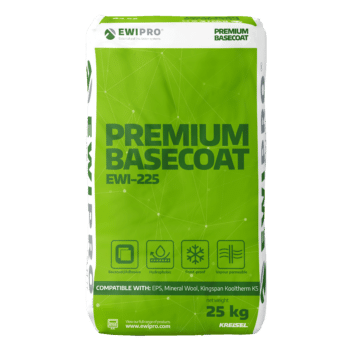

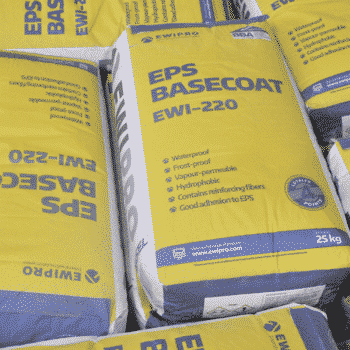
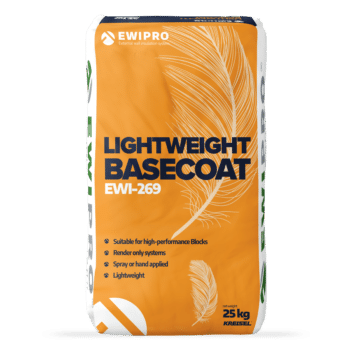
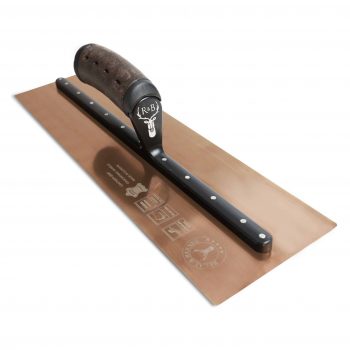
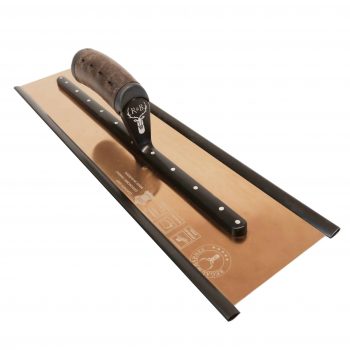
10 thoughts on “The Importance of Basecoat”
can you apply more than one layer of base coat?
Hi Danny, you can apply basecoat in either one or two layers, depending on when you embed the mesh. However, it should not exceed 6mm.
Hi, what basecoat would i use if i want to get a 14 mm thickness.
Thanks, Terry
Hi Terry, we would recommend that the basecoat layer is about 6mm (certainly should not be 14mm thick)
Is a basecoat waterproof when dry? If applied on top of insulation how long can you leave it before you do the silicone render at maximum? I’m wondering since we have a strange project coming up where I might have to wait about 6-9 months with the top silicone render
Hi Andy, as a general rule, basecoats are not waterproof. We do have Aquabase which is usually for installing insulation below the DPC. Regardless, we’d recommend that you procure some rain screens to protect the basecoat if you are having to wait a long time before applying the render.
Our builder has applied the base coat EWI 225 with imbedded fibreglass mesh and has not returned to complete the top coat. How long can this “scratch coat “ be left exposed to the elements before applying the second smooth coat of EWI 225 as a substrate for the thin coat silicone render ?
Hi Paul, the scratch coat really shouldn’t be exposed for longer than a couple of weeks; it has a base level of weather resistance but over time, it can absorb moisture, become brittle, etc. We would recommend contacting the installer to apply the second coat and install some screening if possible.
Hi
can you give me a recommended thickness of basecoat on to concrete blockwork, and what type of basecoat is recommended
Thanks in advance
Hi,
Thanks for reaching out! When applying a basecoat onto concrete blockwork, the recommended thickness will depend on the system you’re using, but generally, we advise:
Basecoat Thickness: 4-6mm when embedding reinforcement mesh. If applying in two passes, ensure each layer is even, allowing the first to firm up before applying the second.
Recommended Basecoat:
EWI-225 Premium Basecoat – Ideal for concrete blockwork, offering excellent adhesion, flexibility, and strength.
Let us know if you need any specific product recommendations for your project, or give us a call on 0203 3974067!